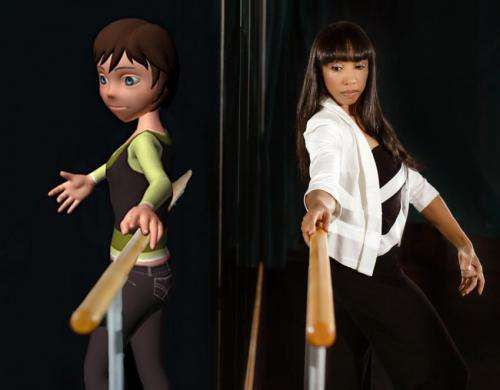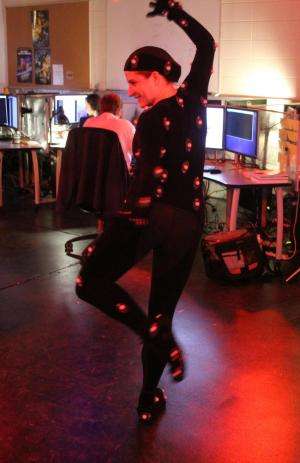Dance choreography improves girls' computational skills

Clemson researchers find that blending movement and computer programming supports girls in building computational thinking skills, according to an ongoing study funded by the National Science Foundation and emerging technology report published in journal Technology, Learning and Knowledge.
Even with increasing demands for computationally savvy workers, there is a lack of representation among women in science, technology, engineering and mathematics fields (STEM), the researchers say.
"We want more diverse faces around the table, helping to come up with technological solutions to societal issues," said Shaundra Daily, lead author on the report and assistant professor of computing at Clemson. "So we're working with girls to create more pathways to support their participation."
Virtual Environment Interactions (VEnvI) is software and curriculum for blending movement and programming, which offers a novel and embodied strategy of engaging fifth- and sixth-grade girls in computational thinking.
"We want to understand how body syntonicity might enable young learners to bootstrap their intuitive knowledge in order to program a three-dimensional character to perform movements," said Alison Leonard, report co-author and assistant professor of education at Clemson.
In the process of developing this emerging technology, the researchers conduct user-centered design research for creating choreography and the social context for a virtual character through which girls can be introduced to alternative applications in computing.
"We adopt the view that computational thinking is a set of concepts, practices and perspectives that draw upon the world of computing and applicable in many STEM fields," Daily said.

Students met with instructors and learned basic curriculum involving the elements of dance, choreography and Alice, an existing educational software that teaches students computer programming in a three-dimensional environment.
The researchers utilize movement choreography as both an engaging and a parallel context for introducing computational thinking. Compositional strategies in the choreographic process of ordering and reordering movement sequences also mirror computational practices of reusing and remixing.
"Executing one bit of code or movement one after the other exists in both programming and choreography. Likewise, loops or repeating a set of steps, also occur in both contexts," Leonard said.
The students moved and created pieces for their virtual characters to perform, bringing about connections between computational thinking and what their bodies are doing.
The findings indicate the active presentation of concepts and future scalability of their virtual environment VEnvI that will add to the rich landscape of emerging technologies geared toward more inclusive strategies to engage girls in computational thinking.
The researchers are designing the first control algorithm that links concepts from computational thinking to animation algorithms, thus creating and evaluating new animation algorithms working to ensure the quality of the resulting choreography.
This emerging technology has the potential to widen the scope of current technologies that seek to cultivate computational thinking for diverse designers, users and audiences, according to the researchers.
More information: Technology, Learning and Knowledge, link.springer.com/article/10.1 … 9237-1/fulltext.html
Provided by Clemson University


















